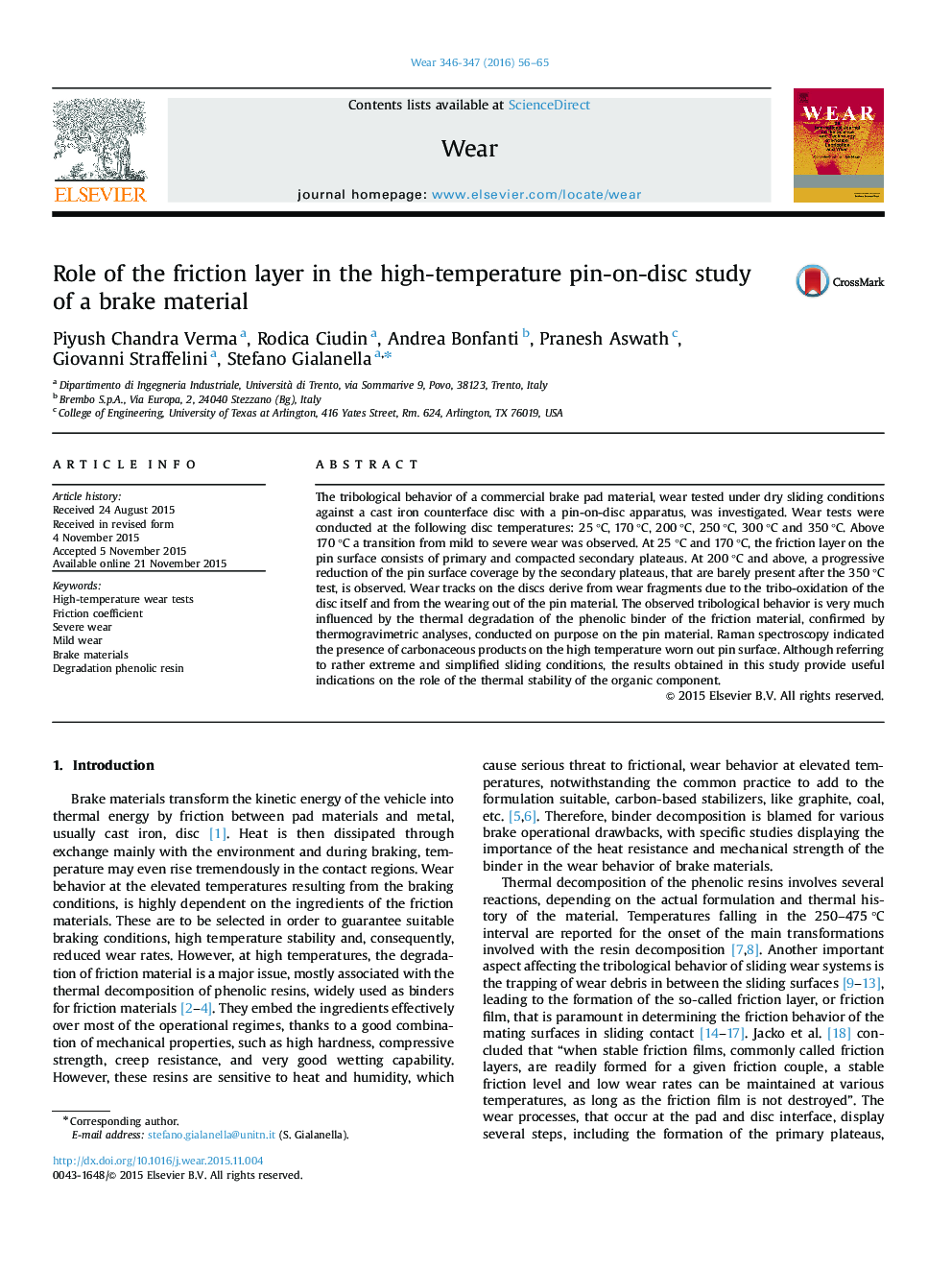| Article ID | Journal | Published Year | Pages | File Type |
|---|---|---|---|---|
| 617023 | Wear | 2016 | 10 Pages |
Abstract
The tribological behavior of a commercial brake pad material, wear tested under dry sliding conditions against a cast iron counterface disc with a pin-on-disc apparatus, was investigated. Wear tests were conducted at the following disc temperatures: 25 °C, 170 °C, 200 °C, 250 °C, 300 °C and 350 °C. Above 170 °C a transition from mild to severe wear was observed. At 25 °C and 170 °C, the friction layer on the pin surface consists of primary and compacted secondary plateaus. At 200 °C and above, a progressive reduction of the pin surface coverage by the secondary plateaus, that are barely present after the 350 °C test, is observed. Wear tracks on the discs derive from wear fragments due to the tribo-oxidation of the disc itself and from the wearing out of the pin material. The observed tribological behavior is very much influenced by the thermal degradation of the phenolic binder of the friction material, confirmed by thermogravimetric analyses, conducted on purpose on the pin material. Raman spectroscopy indicated the presence of carbonaceous products on the high temperature worn out pin surface. Although referring to rather extreme and simplified sliding conditions, the results obtained in this study provide useful indications on the role of the thermal stability of the organic component.
Related Topics
Physical Sciences and Engineering
Chemical Engineering
Colloid and Surface Chemistry
Authors
Piyush Chandra Verma, Rodica Ciudin, Andrea Bonfanti, Pranesh Aswath, Giovanni Straffelini, Stefano Gialanella,
